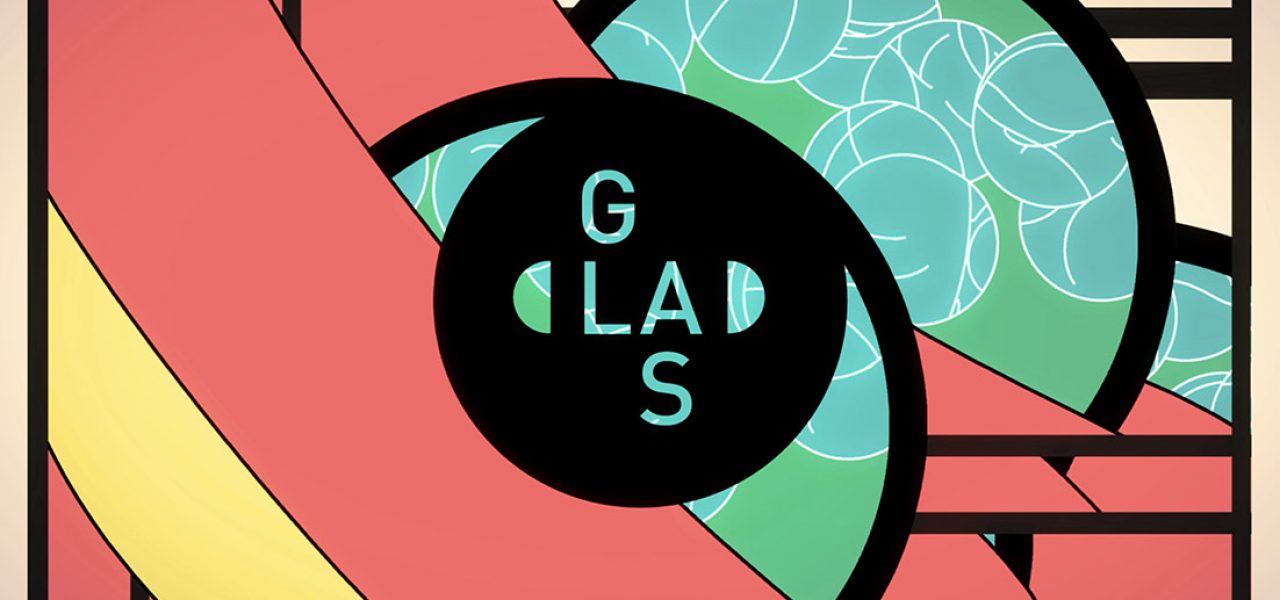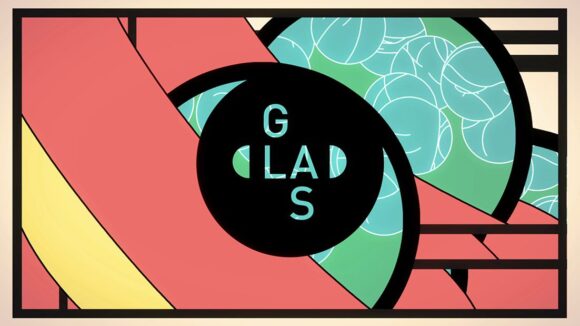

‘Festivals Are A Community Endeavor’: Talking With The Organizers Of GLAS Animation Festival
The organizers of the GLAS Animation Festival have succeeded in doing something that no one else has done in the United States for many years: running a full-scale animation festival with invited international guests for three consecutive years. The third edition will take place next week in Berkeley, California.
That may not seem like a big deal to people in other countries, where dozens of such festivals take place annually, but in the United States, where government arts funding is virtually nonexistent, it’s nothing short of a miracle to organize an indie-focused event like this through private and corporate funding.
But the accomplishment of GLAS isn’t just that it takes place; it also happens to be an excellent festival, curated with an impeccable eye toward visually and narratively innovative work. Occurring in California, the heart of America’s animation industry, the first couple editions of GLAS have also managed to strike a pleasing balance between independent and commercial work.
Cartoon Brew spoke with festival director and co-founder Jeanette Bonds, festival programmer Sean Buckelew, and selection committee member Tom Brown to learn more about the festival’s programming philosophy, what’s happening in the U.S. indie animation scene, and why the event is a must-attend for both independent and industry artists.
CARTOON BREW: This is the third edition of GLAS, which is a remarkable accomplishment. Congrats! As the only full-scale international animation festival in the United States, what are the biggest challenges of putting it on?
GLAS Team: The challenge has always been trying to expand the festival without giving up our independent spirit. Considering the scope of the festival, our budget is rather modest and we’ve had to remain resourceful. We always try to prioritize the things that matter to us most: filmmakers and films.
As we see it, festivals are a community endeavor, and we’re truly grateful for the many people who have supported us, from programmers, board members, advisory committee, volunteers, festival friends, filmmakers, and most important, the people who come to the festival and help spread the word. With their support, we’ve managed to grow sustainably. We want to bring more filmmakers and guest presenters, and provide accommodations for filmmakers in competition. Our long-term goal is to expand as an institution, create an international animation residency, and provide large grants to independent filmmakers to create short films. All of this means a necessity to find direct funding from individual donors, sponsorships, and grants. We’re grateful we’ve been able to do this three times, but we don’t have any plans to slow down.
Can you tell me a little about how films are chosen for the festival? With over 3,600 submissions, I imagine that boiling it down to around 100 films is a challenge?
GLAS Team: Our programming team consists of filmmakers coming from different backgrounds. Everyone is assigned films, and once everything has been watched, we each make a list of our favorites. We then come together, compare our lists, and start making decisions. This final stage is a conversation: some films appear on almost every programmer’s list, and those typically get in, but the exciting part happens when certain programmers fight hard for a film they love that the other programmers happen to have overlooked. These films usually end up getting the most attention at the festival, which is always fun.
There are always more great films that we love than there are available programming slots, so finalizing the program is really difficult. That’s always the hardest part.
What are your thoughts on independent animation in the U.S. at the present moment, and how it has evolved in the last 5-10 years?
GLAS Team: The biggest sea change has obviously been in digital animation tools and digital distribution. This has given a voice and platform to animators working outside of places where animation is traditionally produced. It has also allowed production quality to rise to a whole new level, especially for animators working alone without any institutional financial support (which has unfortunately remained largely non-existent for independent animators in the U.S.). This is the work that we’re always most excited to discover, and even though the internet is often where the work is exhibited, we think it’s important to show it in a theater and contextualize it with other great international shorts (we also put a special emphasis on it in our U.S. Competition program).
Another question about the U.S. indie scene: can you give us five animation filmmakers in the U.S. that you think people should be paying attention to right now?
GLAS Team: There are so many talented filmmakers in U.S. making amazing work, it’s difficult for us to narrow it down to five. But we think each of these filmmakers have their own unique style with strong artistic voices, even in their commercial work, and have all made films that we love: Kirsten Lepore, Andrew Thomas Huang, Allison Schulnik, Kangmin Kim, and Jeron Braxton. Some of these artists have been featured on Cartoon Brew before, so people might already be familiar with their work, but for someone just discovering contemporary independent animators in the United States, they’re a great place to start.
It’s always been a source of frustration for me that a lot of artists working in the industry don’t understand the importance of attending film festivals, or recognize the commonalities and synergies between the commercial content that they create and the work that independent filmmakers produce. If you had to pitch industry artists in L.A. and S.F. on why they should spend a couple days attending a festival like GLAS, what would you tell them?
GLAS Team: No matter who you are, festivals are a great place to branch out and see what new and exciting things are happening all over the world, and to replenish your creative well. This is also the environment the films were made for, and viewing a film with an audience in the strict social rules of a cinema with no distractions is something you just can’t replicate at home.
And the events and screenings at a festival are just the tip of the iceberg. The connections made at this kind of event are invaluable, and cannot be replicated online. You can meet your animation heroes and embarrass yourself in front of them, but you will also meet your peers, people who will grow up with you in the industry. You never know who you might end up talking to and what opportunities will come from that.
Relatedly, while GLAS has numerous studio-related events and guests, the programming is still overwhelmingly indie-focused, which is a bold move for a festival that geographically takes place so close to the heart of the industry. How do you characterize the festival’s relationship with the California animation industry and how do you think the industry should support it?
GLAS Team: A lot of the festival organization happens in Los Angeles where the industry is part of our day-to-day lives, so I think the emphasis on independent work can be seen more as a refreshing alternative for people who might not get a chance to interact with that work or meet the artists otherwise. It can be hard to break the inertia of staying in your animation lane, and we just think this work is exciting and inspiring, no matter what sector of the filmmaking world you’re working in. Also, our festival wouldn’t exist without all the support we get from studios. Thinking more broadly, our main hope is that cultivating and supporting original and independent voices is to everyone’s benefit, including and especially the animation industry.
Finally, tell me about some of the programs that you’re most excited about this year…
In all honestly we’re really excited about everything so it’s difficult for us to choose. The competitions aren’t to be missed, people made amazing work this year, but if we have to narrow it down to a few of our personal favorites, we would say:
David OReilly. One of the most exciting, innovative animators out there, and he’s presenting several programs. In addition to a short film retrospective and conversation talking about his animation practice, we’re also screening his rarely seen feature The Agency.
Phil Lord & Chris Miller. We still can’t believe these two are coming. We’re showing a few of their films, including The Lego Movie and 21 Jump Street (what other animation festival has an excuse to put an image of Channing Tatum in their catalog?). We’re also hosting a Q&A with them that can’t be missed.
John Daker. This is an event that’s hard to describe (the sleazy musical alter-ego of filmmaker Sophie Koko Gate, illustrator Rachel Sale, and musicians/sound designers Skillbard), but is guaranteed to be a highlight. It’s also the only place you’ll see giant butts rhythmically smashing into each other.
Réka Bucsi. Réka’s new film Solar Walk recently won the top short film prize at the Berlin Film Festival, which is a particularly rare achievement for an animated film. We’re showing it in her retrospective screening alongside her other wonderful films, including the two festival smash hits Love and Symphony no. 42.
Get all the details about how to attend the GLAS Animation Festival, running from March 22-25 in Berkeley, California, at GLASAnimation.com.

.png)